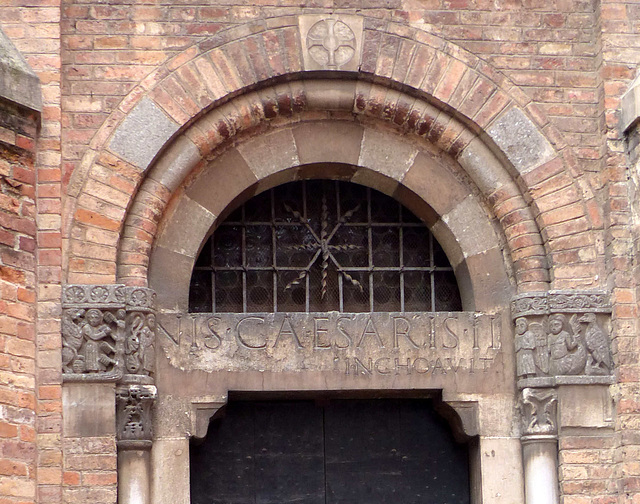Bologna - Basilica del Sepolcro
Bologna - Basilica dei SS. Vitale e Agricola
Bologna - Basilica di Santo Stefano
Bologna - Basilica di Santo Stefano
Bologna - Basilica di Santo Stefano
Bologna - "Basilica di Santo Stefano"
Bologna - "Basilica di Santo Stefano"
Bologna - "Basilica di Santo Stefano"
Bologna - Basilica dei San Vitale e Sant'Agricola
Bologna - Basilica dei San Vitale e Sant'Agricola
Bologna - Basilica dei San Vitale e Sant'Agricola
Bologna - Basilica dei San Vitale e Sant'Agricola
Bologna - Basilica dei San Vitale e Sant'Agricola
Bologna - Basilica del Sepolcro
Bologna - Basilica del Sepolcro
Bologna - Basilica del Sepolcro
Bologna - Basilica del Sepolcro
Bologna - Basilica del Sepolcro
Bologna - Basilica del Sepolcro
Bologna - Chiesa del Crocifisso
Bologna - Chiesa del Crocifisso
Bologna - Chiesa del Crocifisso
Bologna - Chiesa del Crocifisso
Bologna - Basilica di Santo Stefano
Bologna - Sette Chiese
Location
Keywords
Authorizations, license
-
Visible by: Everyone -
All rights reserved
-
24 visits
Bologna - Basilica dei SS. Vitale e Agricola


Bologna is the capital of the Emilia-Romagna region. Founded by the Etruscans, the city has been an urban center for centuries, first under the Etruscans, then under the Celts, then under the Romans, and again in the Middle Ages.
In 728 Bologna was conquered by the Longobard king Liutprand and thus became part of the Longobard Empire.
In the 11th century the place grew again as a free commune. In 1088 the university was founded, today the oldest university in Europe. As the city continued to expand, it received a new ring of ramparts in the 12th century, and another was completed in the 14th century.
In 1164 Bologna joined the Lombard League against Frederick I Barbarossa, and in 1256 the city promulgated the "Legge del Paradiso", which abolished serfdom and slavery and freed the remaining slaves with public money. The city center was a forest of towers. It is estimated that around 100 family towers of the leading families, church towers and towers of public buildings defined the cityscape.
In 1272, King Enzio of Sardinia, an illegitimate son of the Hohenstaufen Emperor Frederick II, died in Bologna after more than 22 years of imprisonment.
The "Church of the Saints Vitale and Agricola" is just as the Basilica di Santo Stefano part of "Sette Chiese" (= "Seven Churches") or "Santa Gerusalemme" (= "Holy Jerusalem"). It comprises a complex of interconnected religious buildings built between the 5th and 13th centuries.
According to tradition, St. Petronius, a bishop in the 5th century, built the first basilica. He wanted a building reminiscent of the Church of the Holy Sepulchre in Jerusalem.
Two interesting capitals flank this portal. A woman with a lion at her side trying to bite her and a praying man surrounded by strange apparitions. The woman is clinging to a palm tree.
The right capital shows three figures: an angel, a mermaid and a raven. The crow and the siren could represent the passions associated with lust. In front of these passions is the angel who shows the way to heaven to the faithful.
The inscription reads "Vis Caesaris II inchoavit", but I do not know, who Caesar II was.
Translate into English
In 728 Bologna was conquered by the Longobard king Liutprand and thus became part of the Longobard Empire.
In the 11th century the place grew again as a free commune. In 1088 the university was founded, today the oldest university in Europe. As the city continued to expand, it received a new ring of ramparts in the 12th century, and another was completed in the 14th century.
In 1164 Bologna joined the Lombard League against Frederick I Barbarossa, and in 1256 the city promulgated the "Legge del Paradiso", which abolished serfdom and slavery and freed the remaining slaves with public money. The city center was a forest of towers. It is estimated that around 100 family towers of the leading families, church towers and towers of public buildings defined the cityscape.
In 1272, King Enzio of Sardinia, an illegitimate son of the Hohenstaufen Emperor Frederick II, died in Bologna after more than 22 years of imprisonment.
The "Church of the Saints Vitale and Agricola" is just as the Basilica di Santo Stefano part of "Sette Chiese" (= "Seven Churches") or "Santa Gerusalemme" (= "Holy Jerusalem"). It comprises a complex of interconnected religious buildings built between the 5th and 13th centuries.
According to tradition, St. Petronius, a bishop in the 5th century, built the first basilica. He wanted a building reminiscent of the Church of the Holy Sepulchre in Jerusalem.
Two interesting capitals flank this portal. A woman with a lion at her side trying to bite her and a praying man surrounded by strange apparitions. The woman is clinging to a palm tree.
The right capital shows three figures: an angel, a mermaid and a raven. The crow and the siren could represent the passions associated with lust. In front of these passions is the angel who shows the way to heaven to the faithful.
The inscription reads "Vis Caesaris II inchoavit", but I do not know, who Caesar II was.
Ulrich John, Fred Fouarge have particularly liked this photo
- Keyboard shortcuts:
Jump to top
RSS feed- Latest comments - Subscribe to the comment feeds of this photo
- ipernity © 2007-2024
- Help & Contact
|
Club news
|
About ipernity
|
History |
ipernity Club & Prices |
Guide of good conduct
Donate | Group guidelines | Privacy policy | Terms of use | Statutes | In memoria -
Facebook
Twitter

Sign-in to write a comment.